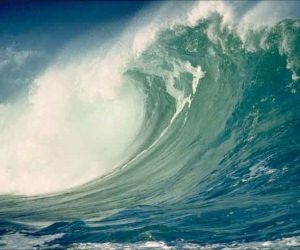
 Large and mid-sized commercial insurance brokerages in Canada may soon have access to a new Canadian tsunami catastrophe model.
Large and mid-sized commercial insurance brokerages in Canada may soon have access to a new Canadian tsunami catastrophe model.
The new cat model is currently being developed by the Oasis Loss Modelling Framework, a not-for-profit company supported by Lloyd’s.
Oasis is anticipated to have four proof-of-concept models from this summer for European windstorm, United Kingdom flood, North African quake and West Coast U.S. and Canada tsunami scenarios, Lloyd’s of London reports. The project is receiving financial backing from re/insurers and brokers in the United Kingdom, Bermuda, Zurich and the United States.
Reinsurers and commercial brokers can use the model to help calculate the exposure in their portfolios following a tsunami due to an earthquake off Canada’s West Coast. This helps them make decisions about which risks to carry on their books.
“There are people who have models of tsunami, but the question is: Is there a model that’s looking at tsunami that could be used by the insurance and reinsurance industry to make a calculation of expected losses?” Dickie Whitaker, project director at Oasis Loss Modelling Framework, told Insurance Business. “To my mind there isn’t one that does that anywhere in the world, including in Canada and the United States….
“We want to build this for the insurance community, including brokers, because they are not well-served by a limited supply that is currently available around the world,” Whitaker said.
In Canada, the catastrophe modeling landscape is dominated by Risk Management Solutions (RMS). This situation became the topic of a 2010 KPMG study that found Canadian insurers were relying too heavily on the vendor’s catastrophe models.
The Canadian tsunami cat model is based on data about property damage collected after the 2011 earthquake and tsunami in Tohoku, Japan. “At the moment, we think that’s a reasonable surrogate for what might happen in Canada and the U.S.,” Whitaker said.
The Oasis tsunami cat model has three main components. The company owns, and is giving away for free, the simulation kernel. “That’s the grunt engine in the middle that does fairly significant calculations very, very quickly,” he said.
Oasis is also giving away the financial module, which contains a number of assumptions the insurance industry uses – including limits and sublimits – to calculate gross and net damage.
The vulnerability and hazard modules are handled by third parties.
The model takes into account factors such as the formation of the seabed; the displacement of water that the seabed would produce, how far up the coast the water would travel; what would happen when the water hits properties, houses and factories; and what happens to the water flow after it hits the buildings.
